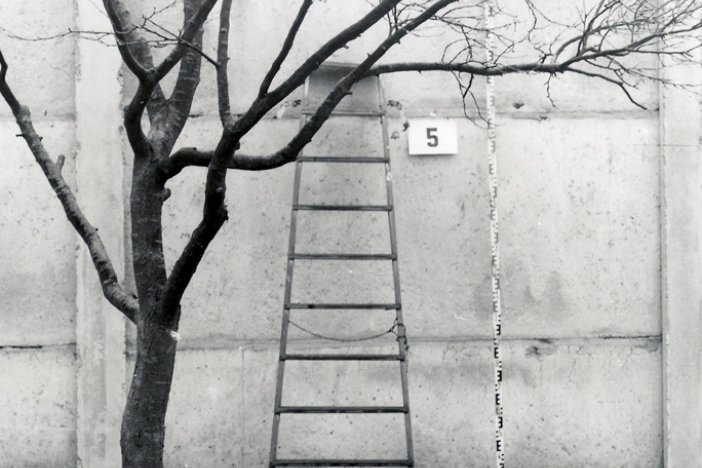An Iconic Moment: The Socialist Fraternal Kiss
At the celebrations of the 30th anniversary of the founding of the GDR, heads of states Leonid Brezhnev and Erich Honecker ritually performed the socialist fraternal kiss. The snapshot became the East Side Gallery's most photographed artwork.By Jan-Niklas Welling and Catarina Medeiros de Brito Pontes
“Mein Gott, hilf mir, diese tödliche Liebe zu überleben (My God, help me survive this deadly love)” from Dmitri Wrubel at the East Side Gallery, 2009 (Photo: Berlin Wall Foundation - Günther Schaefer)
On the occasion of the 30th anniversary of the founding of the GDR, many heads of state of the Eastern Bloc countries arrived in East Berlin for festivities lasting several days. On 5 October 1979, after the conclusion of an economic agreement between the USSR and the GDR, there was an iconic moment: Brezhnev and Honecker performed the socialist fraternal kiss in their own heartfelt way. The possible origin of the ritual was the “Easter kiss of peace” in the Russian Orthodox Church, and later became a symbol of the Communist International within the working class. In contrast to the "cold" Western handshake, the leaders of the real socialist countries wanted to illustrate solidarity and brotherhood as well as peaceful cooperation between their states.
The fraternal kiss of 5 October 1979 was captured in black and white by the press photographer Régis Bossu and widely circulated by one of the largest French press agencies under the title "Le Baiser" (The Kiss). The image was widely received and used in various ways. It could be found in the tabloid Paris Match, covering an entire double-page spread. The motif immediately developed into a symbol during the Cold War and became a pop cultural icon.
There are various statements by Dmitri Wrubel about how he came across the motif. One of them is that a friend pointed out the photo to him. In an interview, Wrubel commented on his added caption in Russian and in German: "my God, help me survive this deadly love." This "deadly love" refers to his life situation at the time, in which he had to choose between two women. However, the concrete connection to the motif as well as the colour scheme in pink and yellowish green, remain unclear.
The motif is very popular among tourists: they often imitate the kiss, and the images spread on social media. As a result, the coloured motif on the ESG is probably much more widespread today than the original black-and-white photo.
This text is published under the Creative Commons license "CC BY-NC-ND 4.0". You may share the text by mentioning the license CC BY-NC-ND 4.0 and the authors. Copyright information for the images can be found in the image captions.


